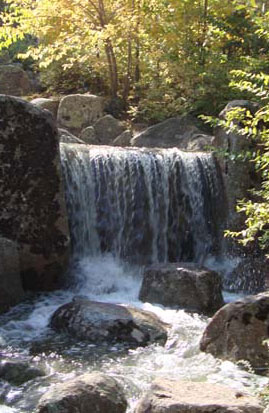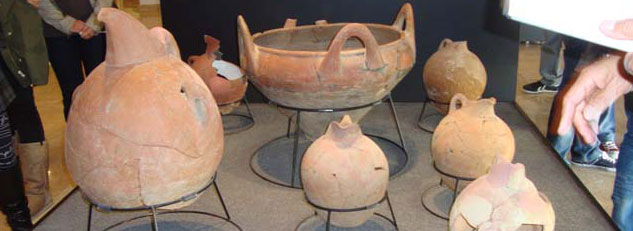Archaeology and Landscape and Interior Architecture StudentsVisit Kaman
BY ŞİAR CAN ŞENER (HART IV)
On Saturday, October 15, students of the Departments of Archaeology and Landscape and Interior Architecture visited Kaman in Kırşehir. There, a "campus" for the work of archaeologists includes a museum, an institute and an excavation site. In addition, a Japanese garden displays the beauty of nature!
The trip was organized by Prof. Dominique Kassab Tezgör (Fine Arts Department) on Saturday, October 15, in order to give students taking the courses HART 409 "Museum Practices and the Preservation of Cultural Heritage" and LAUD 374 "History of the Gardens" new perspectives in their studies. The students were welcomed by Dr. Sachihiro Omura, the director of the Japanese Institute of Anatolian Archeology and of the Kaman Kalehöyük excavations since 1986.
First, students visited the archaeology museum, which opened last year. From the outside, the museum looks like a tumulus (a man-made hill). Two lions brought from a Hittite quarry near the museum stand on each side of the entrance. The museum interior is not very large, but the artefacts on exhibit are very well arranged according to the historical chronology of the peoples who have lived in Kaman.
 In addition, technology is used in the museum's displays in a way not to be found in any other museum in Turkey. For instance, museumgoers can "visit" Kalehöyük by means of a 3-D projection. Another feature is a 3-D model showing the stratigraphy of Kalehöyük: the Ottoman Empire Period (15th-17th centuries AD), the Iron Age (12th-4th centuries BC), the Middle and Late Bronze Ages (20th-12th centuries BC) and the Early Bronze Age (3rd millenium BC).
In addition, technology is used in the museum's displays in a way not to be found in any other museum in Turkey. For instance, museumgoers can "visit" Kalehöyük by means of a 3-D projection. Another feature is a 3-D model showing the stratigraphy of Kalehöyük: the Ottoman Empire Period (15th-17th centuries AD), the Iron Age (12th-4th centuries BC), the Middle and Late Bronze Ages (20th-12th centuries BC) and the Early Bronze Age (3rd millenium BC).
After seeing the museum, the students visited the Japanese garden, located on the slope of a hill close to the museum. Japan's Prince Mikasa is supporting the Kalehöyük excavation, and the garden was actually designed by his gardener. Not surprisingly, it's fabulous, with Japanese fruit trees and an artificial pond where Japanese goldfish swim. The stones in the garden were brought from the Kızılırmak, and have been placed in specific positions according to their "eyes." Please don't ask us exactly what this is - surely only Japanese gardeners can see the eye of a stone!
Next, the students went to the Japanese Institute of Anatolian Archeology, whose facilities include a conference hall, a drawing laboratory, a photography room and an X-ray fluorescence device. An important part of the Institute's library was donated by the late Professor Tahsin Özgüç, one of Turkey's most prominent archaeologists, and the conference room is named for him. The institute provides a place where both scholars and students can do research not only in archaeology but also in other disciplines dedicated to the study of the past.
The last stop was the Kalehöyük excavation. Kalehöyük is a medium-sized mound, 280 meters in diameter with a height of 16 meters. The stratigraphy of the site can be clearly seen, giving an idea of who has lived in this area over thousands of years. At this time of year, preparations are underway to contruct a roof over the top of the mound in order to protect the excavation trenches during the winter.
At the end of the day, the students thanked Dr. Omura for allowing them to have this special view of the Kaman archaeology "campus." Archaeology and interior and landscape architecture students alike returned to Ankara highly impressed with what they had seen.
